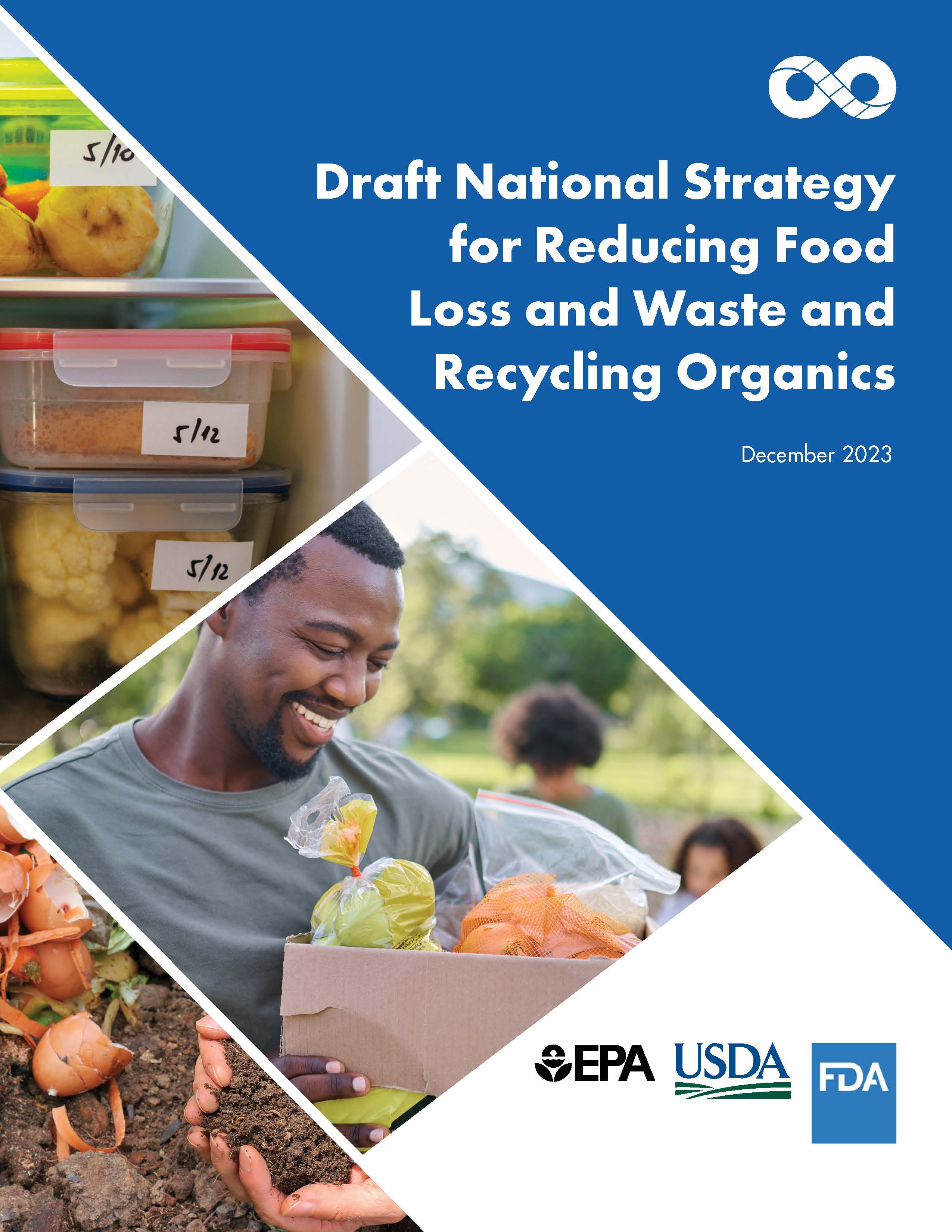- Food Loss and Waste
- Why should we care about food waste?
- Draft National Strategy for Reducing Food Loss and Waste and Recycling Organics
- Federal Interagency Collaboration to Reduce Food Loss and Waste
- U.S. Food Loss and Waste 2030 Champions
- USDA Activities and Partnerships
- Farmers
- Businesses
- Consumers
- Schools
- Donating
- Funding
- Frequently Asked Questions
- Latest News and Multimedia
- Contact Us
 On December 2, 2023 the USDA, Environmental Protection Agency (EPA) and Food and Drug Administration (FDA) released the Draft National Strategy for Reducing Food Loss and Waste and Recycling Organics (PDF, 1.7 MB).
On December 2, 2023 the USDA, Environmental Protection Agency (EPA) and Food and Drug Administration (FDA) released the Draft National Strategy for Reducing Food Loss and Waste and Recycling Organics (PDF, 1.7 MB).
This draft National Strategy is a step toward meeting our national goal of reducing food loss and waste by 50% by 2030. The actions outlined by the USDA, EPA, and FDA in this strategy will help reduce greenhouse gas emissions (including methane), save households and businesses money, and build cleaner communities by reducing food loss and waste.
The four main objectives in the draft National Strategy are:
- Objective 1: Prevent the loss of food where possible.
- Objective 2: Prevent the waste of food where possible.
- Objective 3: Increase the recycling rate for all organic waste.
- Objective 4: Support policies that incentivize and encourage food loss and waste prevention and organics recycling.
“This joint effort between the USDA, EPA, and FDA represents a vital step towards reducing food loss and waste in our nation,” said Agriculture Secretary Tom Vilsack. “With the draft strategy, we will work towards preventing food loss and waste, increasing organic waste recycling, and promoting supportive policies.”
Press Release on Draft National Strategy for Reducing Food Loss and Waste and Recycling Organics. (December 2, 2023)Open Comment Period
There will be a 30-day open comment period on the draft National Strategy at Regulations.gov, Docket ID No. EPA-HQ-OLEM-2022-0415, starting on Tuesday, December 5, 2023.
The public comment period has been extended until February 3rd.
As food loss and waste impacts all citizens and stakeholders across the food system, we are seeking input and comments from a wide range of parties, including consumers, community groups, businesses, retail grocers, farmers, institutions of higher learning, restaurants, industry groups, agricultural distributors, caters, and wholesalers. If you are reading this – we want to hear from you!
